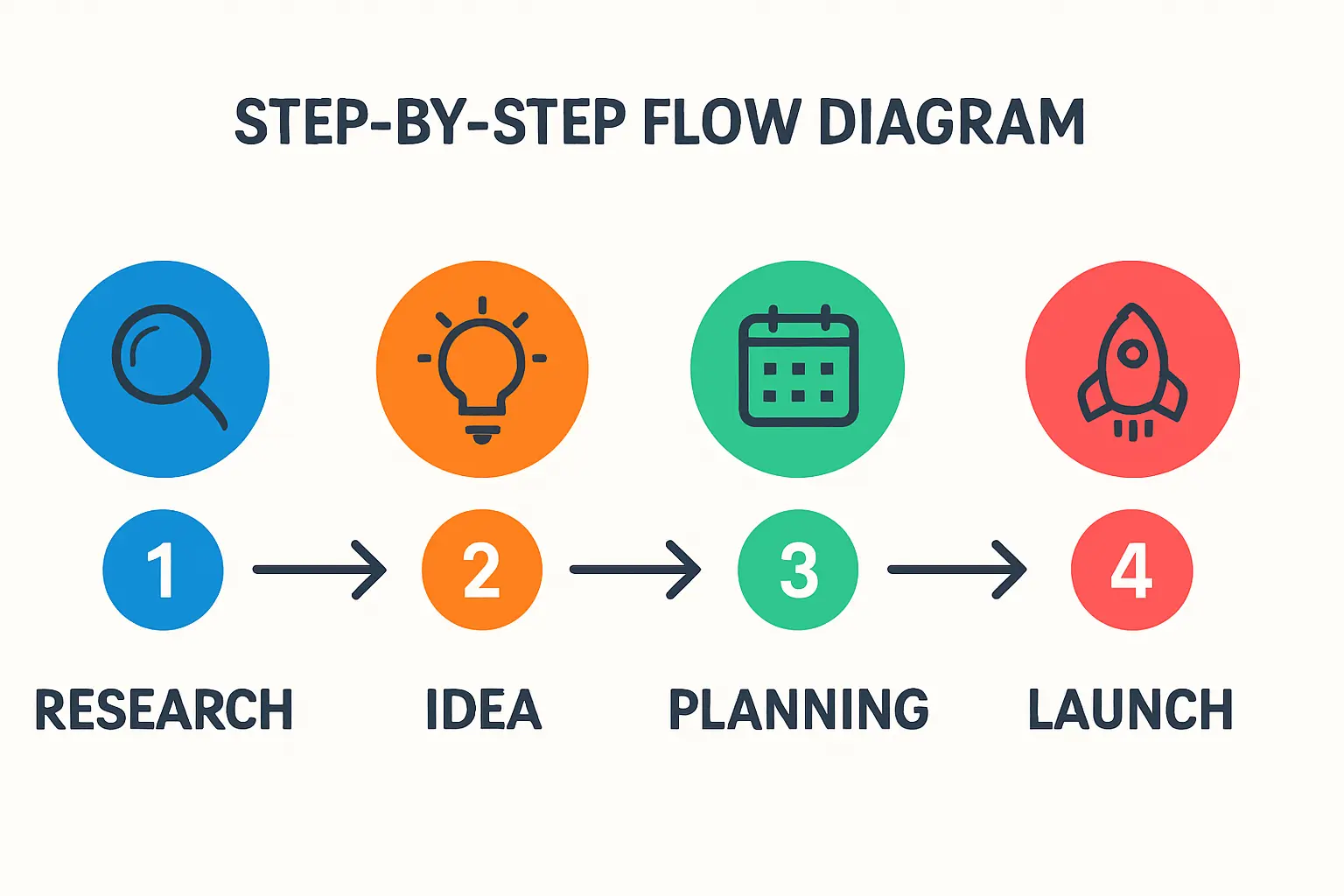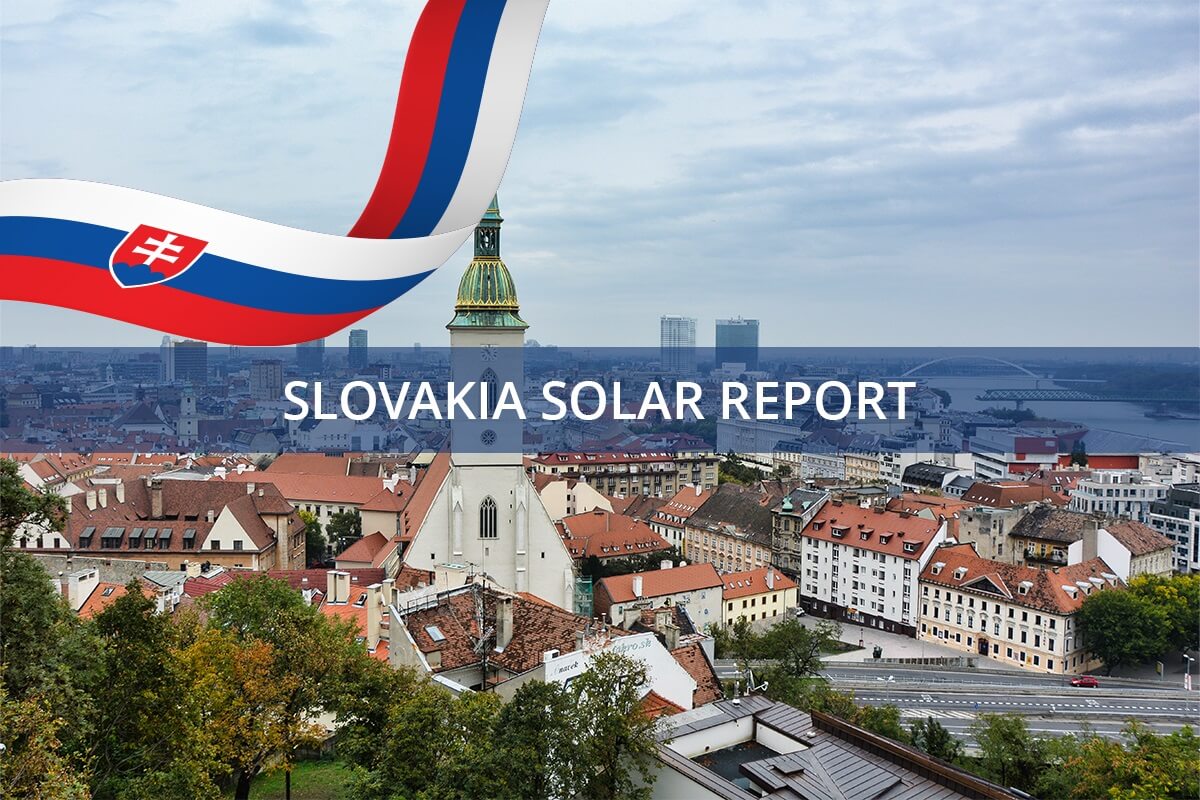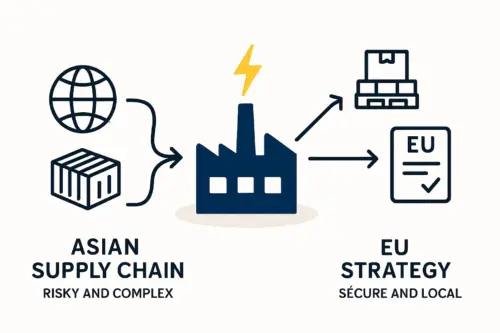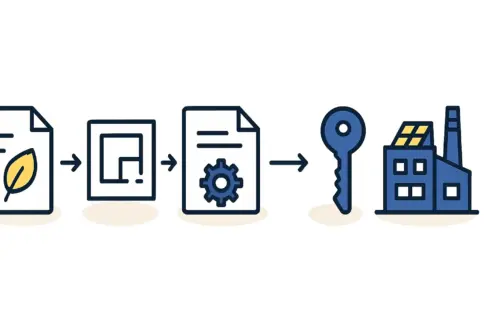For international entrepreneurs exploring the European solar market, Slovakia offers a compelling combination of industrial potential and strategic public funding. The European Union’s Recovery and Resilience Facility (RRF) has allocated significant capital to transform national economies, with a strong emphasis on the green transition.
Navigating this funding landscape can be the decisive factor in successfully launching a solar module manufacturing operation. This guide breaks down the structure of the RRF program in Slovakia, explains the eligibility criteria for solar manufacturing projects, and details the application process, providing a framework for securing public investment for a new industrial venture.
Understanding the EU Recovery and Resilience Facility (RRF): A Strategic Overview
The Recovery and Resilience Facility is the centerpiece of the EU’s large-scale recovery plan. It is not a conventional subsidy program but a performance-based fund designed to stimulate economic recovery while advancing long-term strategic goals, primarily the green and digital transitions.
For Slovakia, this translates into a national allocation of approximately €6.3 billion. Potential applicants must understand a key principle: funds are disbursed based on achieving pre-agreed milestones and targets. This performance-based model demands a clear, credible, and measurable business plan from the outset.
This initiative is amplified by the REPowerEU plan, which aims to accelerate Europe’s shift away from fossil fuels and bolster its energy independence. Solar manufacturing is central to this objective, creating a favorable policy environment for projects that strengthen Europe’s domestic renewable energy supply chain.
How Slovakia’s National Plan Aligns with Solar Manufacturing
While the EU sets the high-level framework, the RRF’s implementation is managed at the national level. Slovakia’s own Recovery and Resilience Plan (RRP) outlines the country’s specific investment priorities. Crucially, the plan dedicates 43% of its total allocation, a substantial portion, to measures supporting climate objectives.
The primary focus areas for a solar entrepreneur include:
- The Green Economy: Direct investments in renewable energy sources, energy efficiency, and sustainable infrastructure. A solar module factory is a foundational component of this ecosystem, enabling the local production of key renewable technology.
- Digitalization: Funding to modernize businesses and public administration, which can support the establishment of advanced, automated manufacturing facilities (Industry 4.0).
This structure means prospective investors do not apply to the EU Commission in Brussels. Instead, applications are submitted to the relevant Slovak national authorities that manage the specific calls for proposals.

Key Eligibility Criteria for Your Solar Project
While specific requirements are detailed in each call for proposals, several core criteria consistently appear in the selection process. A successful application must make a convincing case in these key areas.
Ready to make big Profits?
The solar Industry is Booming
WE HELP NEWCOMERS to the solar industry start their own solar module production line. Customers can make BIG PROFITS by selling modules and finding investors, without wasting money and time on things they don't need!
Contribution to Green Targets
The project must clearly contribute to Slovakia’s and the EU’s climate and energy goals. For a solar manufacturing plant, this means articulating its role in building a sovereign European PV supply chain, reducing reliance on imported components, and directly enabling the deployment of renewable energy capacity.
Economic Viability
Applicants must present a sound business case that extends beyond a simple profit forecast. This requires a detailed financial model, a clear understanding of the initial investment requirements, and a credible plan for market entry and long-term sustainability. The project must be a viable commercial enterprise, not just an effort to capture grant funding.
Technological Readiness
The proposal should be based on proven, state-of-the-art manufacturing technology. Public authorities favor projects with low technological risk and a clear path to production. A well-defined plan for the production line, including machinery specifications and output capacity, is essential.
Job Creation and Regional Impact
Because RRF funding is intended to foster broad economic development, the project’s potential to create skilled jobs, stimulate local economies, and contribute to regional development is a significant factor in the evaluation.

The Application Process: A Step-by-Step Guide
Navigating the application process requires diligence and a structured approach. Based on experience with industrial project proposals in the EU, the process generally follows these steps:
-
Monitor Calls for Proposals: Relevant Slovak ministries (such as the Ministry of Economy or Ministry of Environment) publish specific calls for proposals on their official websites. These documents outline the detailed rules, deadlines, and evaluation criteria.
-
Prepare a Comprehensive Project Proposal: In this most critical phase, you will create an extensive document that typically includes the full business plan, technical factory specifications, financial projections, environmental impact assessments, and a detailed explanation of how the project meets the call’s objectives.
-
Submission and Evaluation: Once submitted, the application undergoes a formal review by the responsible authority. This is a competitive process where proposals are scored and ranked against the published criteria, with only the highest-scoring projects selected for funding.
-
Contracting and Milestone Reporting: If successful, the applicant enters into a grant agreement that formalizes the project’s targets and milestones. Funding is released in tranches as these milestones are met and verified, underscoring the facility’s performance-based nature.

Frequently Asked Questions (FAQ)
Is this funding only for Slovak companies?
No, the calls are generally open to any legal entity registered in the EU. A foreign investor would typically establish a subsidiary in Slovakia to be eligible.
What is the typical grant amount or co-financing rate?
This varies significantly with each call for proposals, as grants rarely cover 100% of the project cost. They are designed to co-finance a project, meaning the applicant must secure a substantial portion of the investment from private sources like equity or loans. Co-financing rates might range from 30% to 50%, depending on the project type and location.
How long does the application process take?
From the publication of a call to a final funding decision, the process can take several months. A well-prepared project plan is crucial for meeting the tight deadlines often associated with these calls.
Do I need a local partner in Slovakia?
While not always a formal requirement, having local partners or consultants can be highly beneficial for navigating the administrative landscape, understanding local regulations, and strengthening the proposal’s regional impact.
Can the grant cover operational costs after the factory is built?
Generally, RRF grants are for capital investment (e.g., building construction, machinery purchase). They are not typically used to cover ongoing operational expenses like salaries or raw materials once the project is complete.
For any business leader considering a solar manufacturing presence in Europe, understanding these funding mechanisms is a critical first step. The alignment of EU strategic goals with Slovakia’s national development plan creates a powerful opportunity for well-prepared and commercially sound projects. A deeper exploration of the technical requirements and business plan is the logical next step.






